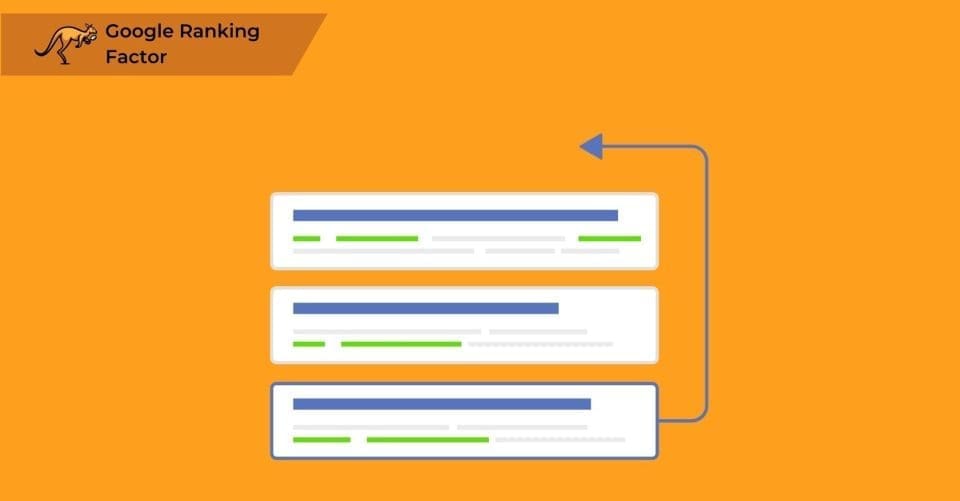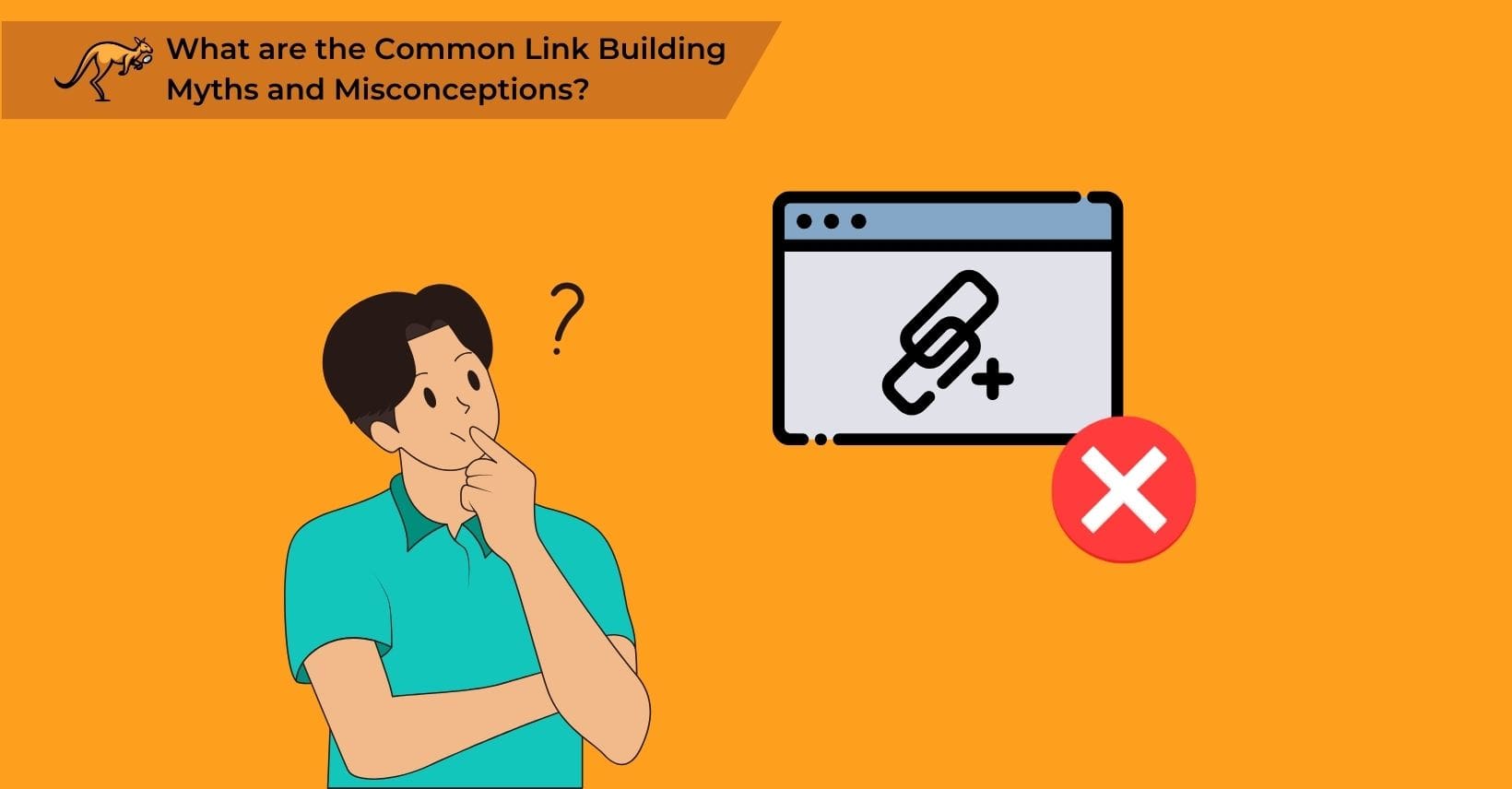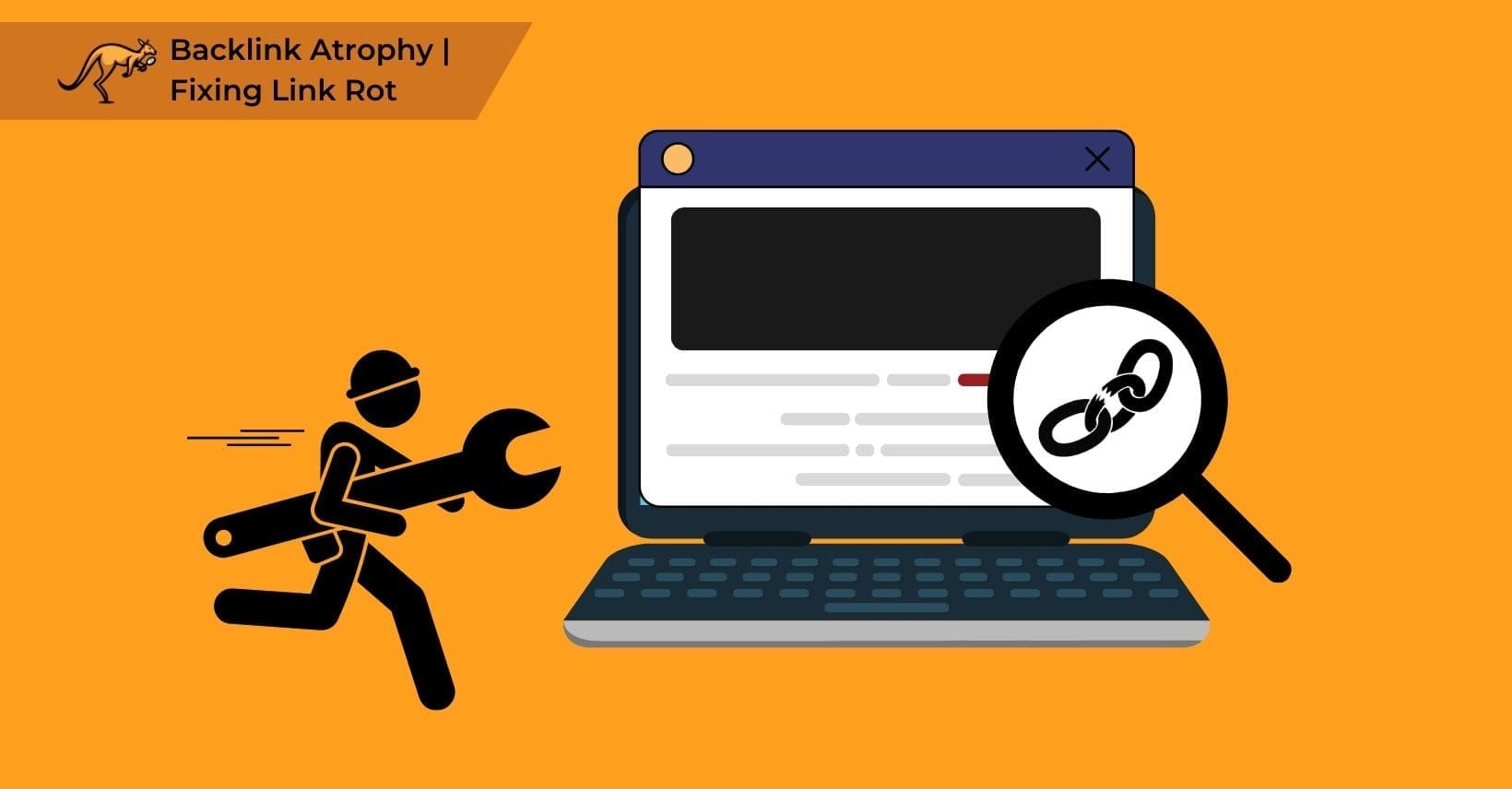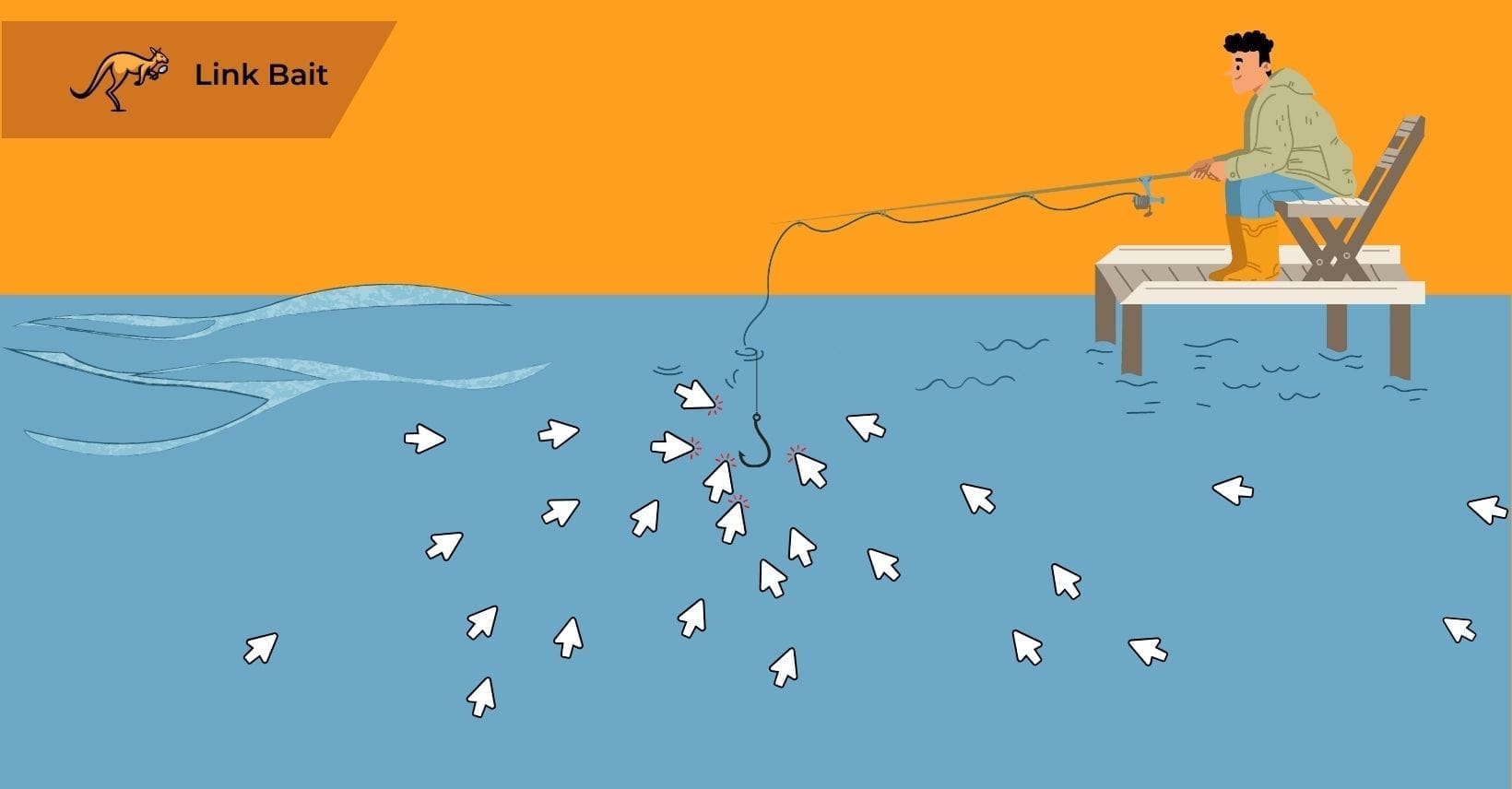Whether you’re new to link building to boost your website’s authority or just curious about its potential benefits, many myths can create confusion, and these myths often arise from partial knowledge.
If you’re just starting your research, read the following before proceeding. Even if you have begun building links or think you have all the needed information, we’re here to help.
Below, we’ve listed common link-building myths and misconceptions that confuse website owners, which include misconceptions about link value equality, image links, authority metrics, nofollow attributes, and the role of backlinks in ranking. This information will aid you in enhancing your website’s views, search engine rankings, and domain authority.
One common belief you’ll encounter concerns the ranking value each link provides.
All Links on a Page Pass Equal Ranking Value
Google will dispel this myth quickly for several reasons. The value of a link on a webpage depends on how likely it is to be clicked by a customer.
For example, if a page has 1,000 lines of text with a link at the top, several throughout, and one at the bottom, the top and bottom links are likelier to be clicked. This behavior is confirmed by ranking documents based on customer habits. The link’s font size, color, and anchor text also impact its clickability. Ensuring the link stands out is crucial.
Additionally, the position of a link on a page improves its link profile and the ranking of the linked page. This is especially vital for internal link building. Placing a high-value link at the top of your home page enhances the ranking of the linked page.
While this covers text links, there’s more to consider about other links. For instance, image links present unique challenges.
Image Links Are Bad for SEO
When used properly, nonimage links hurt SEO. When misused, they can lower your site’s ranking. The alt text should be natural and not stuffed with out-of-context keywords.
Google preferred text links over images because text was easier to read. AI advancements have made reading images easier, allowing better analysis of image links for ranking purposes. This brings us to the idea that link quality might depend on certain metrics.
Link Quality Can Be Defined by DA or PA
A common myth is that link quality can be measured by the domain authority (DA) or page authority (PA) it adds. We investigated how search engines define link quality but found no clear definition.
DA and PA are used to compare sites and hint at link quality, but they are not ranking factors and don’t show how search engines rank your links. Sites tracking PA or DA are only considering one aspect of link building.
While DA and PA can be useful in a link-building strategy, there’s no concrete way to quantify them or how sites link pages. Building high-quality links remains important, but don’t overlook other strategies. Interestingly, the type of link attribute can also play a crucial role.
All Links Should Be Nofollow
You need a mix of nofollow and dofollow links when setting up your website. Spam websites often consist only of dofollow links, so the two link types hold different values.
If your website has only nofollow links, Google ignores them, and your domain authority doesn’t increase. If all links online were nofollow, search engines couldn’t rank websites properly.
Thinking about link strategies? There’s another important aspect to consider.
You Can Ignore Nofollow Links
Nofollow links boost page authority and profile. Use them wisely on your website to improve DA or PA without wasting time. Areas like comment sections or reviews where others add links should be nofollow. Tag links you want to track as nofollow for better review and analysis of your webpage.
With this in place, let’s explore how other elements, like backlinks, influence your site’s Google ranking.
Backlinks Are a ‘Top’ Google Ranking Factor

Although it may be within the top three ranking factors, backlinks are not the only or the top ranking factor for Google. So many other aspects will impact your ranking, including:
- The usability of your website
- If a website is optimized for mobile use
- The speed of a website
- On-page SEO optimization
- Keyword-rich anchor text used within the pages of your site
- If the sitemap is correctly set up
Other aspects of your website will impact the search engine ranking of your site and individual pages, so while link building is important, it should only form part of your overall SEO strategy.
External Links Matter More Than Internal Ones
A common misconception is that external links are the most important, while internal links are less beneficial. The opposite is true. Internal links are crucial in link building and quickly increase search engine visibility.
Use keyword-rich anchor text in internal links to boost rankings for long-tail keywords. Internal links enhance keyword discoverability in search engines, driving more potential customers to your site. Though external links are beneficial, internal linking deserves equal focus.
In early SEO strategies, internal links improve search engine rankings, driving organic traffic and customer engagement. Internal links also guide users to specific products or information you want to highlight.
But what about broken or lost links?
You Can Ignore Broken or Lost Links
Broken or lost links cannot be ignored because these damaged connections harm SEO performance and page ranking, which directly impacts user experience and search visibility. Website owners should fix all broken or lost links immediately since these issues affect conversion rates and SEO rankings, causing customers to leave and look elsewhere when they encounter non-functioning links. However, simply fixing links isn’t enough. Rapid link growth can also lead to problems, particularly with manual penalties.
High Link Velocity Contributes to Manual Penalties
Manual penalties target businesses creating low-quality links from content directories or spam links. However, not all high link volumes attract penalties. Google and other search engines cannot always detect a sudden rise in rankings to apply penalties. Guest blogging improves a site’s backlink profile and search rankings.
Popular pages or websites naturally attract high search results. Viral social media content boosts a page’s backlink profile with social media links, enhancing site ranking. Features by websites, influencers, or publications generate valuable backlinks. This exposure means a few words can lead to SEO success, building high-quality backlinks quickly within Google’s guidelines.
Unlike buying links, social media, guest posts, and blogging build natural and high-authority links. Search engines penalize bought or irrelevant links but not social media links. Despite the benefits, guest posting has potential downsides that need careful consideration.
Guest Posting Negatively Contributes to Link Building

Guest posting has faced criticism for years, often labeled as producing low-quality links. We strongly disagree. A guest post on relevant websites with relevant topics in the same language cannot harm your ranking.
Believing this myth can hurt your business since guest posts effectively leverage Google’s ranking factors. While not the only strategy, guest posts ensure relevant links that benefit your business. Building reciprocal links and targeting links from guest posts to your site are also useful. Inbound links from trusted blogs can boost your link profile and are vital for promotion.
Proper context in guest posts is key; random posts without context are as ineffective as spammy links. With the right context and relevant links to your anchor text, guest posting supports your SEO strategy. Many misconceptions can cloud the true potential of link-building, and it’s crucial to recognize these myths to avoid falling into common pitfalls.
What are Some Common Link Building Myths?
Many other link-building myths are not covered above. When creating your SEO tactics, research using reputable companies and sources. If unsure, search for common myths to learn more. This brings us to another key aspect of SEO that can’t be ignored.
Is Link Building Still Important for SEO?
Link building remains fundamentally important for SEO success, which search engines continue to use as a primary ranking signal. Backlinks to your site from other websites prove your site’s trustworthiness, which shows your company’s credibility and assures customers they can trust your message or product. With trust established, we then explore if this success hinges on creating valuable content.
Can Link Building be Done Without Creating Valuable Content?
Link building technically can be executed without creating valuable content, which inevitably results in poor rankings and diminished search visibility. If your content and links are seen as low value by search engines, your site or page will rank lower on search engine results pages compared to competitors with quality content. To climb higher, you need strategies to ensure high-quality and relevant links.
How Can I Build High-Quality, Relevant Links?
Building high-quality, relevant links requires implementing a strategic approach, which includes creating or commissioning high-quality content that naturally attracts collaboration from other companies. Website owners should collaborate with their niche’s customers, companies, and influencers to establish backlinks while focusing on relevance and authority rather than quantity.
Strengthen trust signals and boost your online presence by exploring effective strategies and best practices here. This leads us to a crucial point about the overarching theme of our discussion, guiding us into the final insights and takeaways.
The Final Word on Link Building Myths and Facts
To build high-quality, relevant links, creating valuable content that attracts collaboration from other companies is essential. Engaging with customers, companies, and influencers within your niche will help establish backlinks, boost trust signals, and enhance your online presence.
Remember, not all links have equal ranking value; link placement, clickability, and context matter. Image links and nofollow links also play a role in your strategy.
Addressing common myths, such as the importance of DA or PA, understanding link attributes, and leveraging internal and external links, is crucial for a well-rounded approach. Maintaining functional links and managing link velocity is vital to avoid penalties and ensure a healthy link profile.
Guest posting, when done correctly, can significantly benefit your SEO strategy. Recognize and avoid common myths to optimize your link-building efforts effectively.
Ultimately, link-building remains a key aspect of SEO. High-quality backlinks indicate trustworthiness and credibility, essential for your site’s ranking. You’ll achieve long-term SEO success by focusing on creating valuable content and establishing relevant links.





